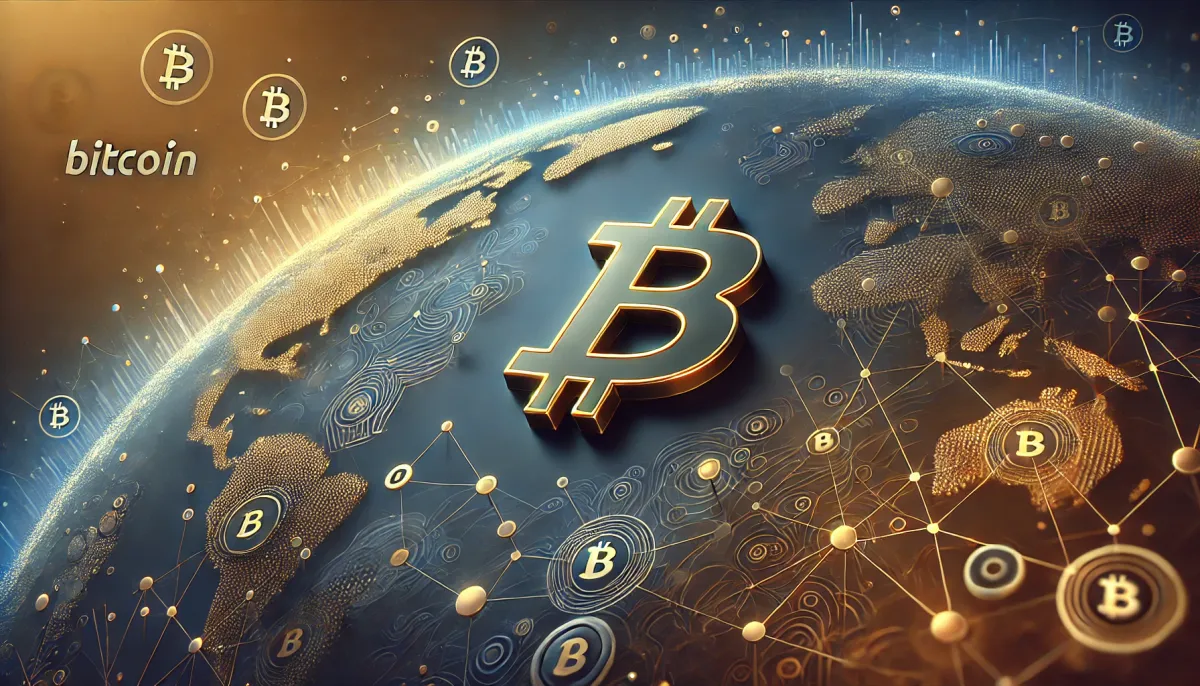Hyperbitcoinization: Risks, Opportunities, and Policy Perspectives
The October 29, 2024 episode of the Unchained podcast features Pierre Rochard and Bitstein discussing the concept of hyperbitcoinization, describing it as a gradual and inevitable transition from fiat currencies to Bitcoin.

- My 'briefing notes' summarize the content of podcast episodes; they do not reflect my own views.
- They contain (1) a summary of podcast content, (2) potential information gaps, and (3) some speculative views on wider implications.
- Pay attention to broadcast dates (I often summarize older episodes)
- Some episodes I summarize may be sponsored: don't trust, verify, if the information you are looking for is to be used for decision-making.
Summary
The October 29, 2024 episode of the Unchained podcast features Pierre Rochard and Bitstein delving into hyperbitcoinization—a process where Bitcoin gradually or abruptly replaces fiat currencies as a global standard. They highlight the risks and opportunities for Bitcoin as a hedge against inflation, the challenges posed by central banks, and the essential role of public education and custody innovation in fostering sustainable Bitcoin adoption.
Take-Home Messages
- Bitcoin as a Global Asset: Bitcoin’s deflationary nature positions it uniquely as a hedge against fiat inflation, offering long-term value.
- Regulatory Resistance: Central banks view Bitcoin as a disruptor, potentially resulting in regulatory constraints aimed at limiting its adoption.
- Custody Models for Institutions: There is a pressing need for innovations in custody solutions that support both institutional security and Bitcoin’s decentralized ideals.
- Education for Sustainable Adoption: Addressing public knowledge gaps is crucial for fostering a balanced understanding of Bitcoin’s value and potential.
- Volatility and Market Risks: Institutional interest in Bitcoin brings opportunities and risks, including potential for market manipulation.
Overview
In this October 29, 2024 episode of the Unchained podcast, Pierre Rochard and Bitstein discuss the concept of hyperbitcoinization, describing it as both a tipping point and an ongoing transition where Bitcoin gains ground as a preferred monetary system. This process, they argue, could upend traditional finance by supplanting inflation-prone fiat currencies. The scalability and global appeal of Bitcoin underscore its potential to transform financial structures fundamentally.
The discussion also addresses the resistance from central banks, especially the European Central Bank, which views Bitcoin as a threat to monetary control. According to Rochard and Bitstein, central banks are defensive because Bitcoin challenges the value of fiat currencies and central authority. This stance reflects an institutional reluctance to engage with Bitcoin's unique attributes as a deflationary asset, often dismissing it as a speculative or illicit financial tool.
Custody solutions for Bitcoin emerge as a key focus, particularly for institutions seeking secure participation. Rochard and Bitstein advocate for self-custody wherever feasible but recognize the need for custodial options that meet institutional security requirements without compromising Bitcoin’s decentralized ethos. Such innovations could support secure and scalable adoption among larger entities.
Lastly, they stress the role of public education to bridge significant knowledge gaps. Misunderstandings around Bitcoin’s deflationary nature and its role as a hedge against fiat inflation could hinder adoption. Educating the public on these points is essential to achieving a sustainable and balanced integration of Bitcoin into the broader economy.
Stakeholder Perspectives
- Bitcoin Enthusiasts: See hyperbitcoinization as a step towards financial freedom from inflation and central bank control.
- Central Banks: Concerned that Bitcoin adoption will undermine fiat stability, challenging their ability to implement monetary policy effectively.
- Regulators: Seek to mitigate risks associated with Bitcoin, especially potential for illicit activities, aiming to introduce more stringent controls.
- Institutional Investors: Attracted by Bitcoin’s deflationary properties but remain cautious of regulatory and custodial risks.
- Public and Retail Investors: Often lack comprehensive understanding of Bitcoin’s potential, making them susceptible to misinformation and speculative hype.
Implications
Hyperbitcoinization represents both an opportunity and a threat to the current financial ecosystem. If Bitcoin adoption accelerates, fiat currencies may face unprecedented competition, particularly in economies suffering from inflation. As central banks continue to resist this shift, regulatory measures could intensify, shaping the future landscape for Bitcoin adoption and integration.
For the Bitcoin ecosystem to thrive, innovation in custody solutions must align with principles of decentralization while ensuring security for larger institutions. Additionally, educational efforts to enhance public understanding of Bitcoin’s economic value could encourage more informed investment decisions, fostering a stable adoption path and reducing reliance on speculative interest.
Future Outlook
Bitcoin’s potential to become a central financial asset will likely be met with ongoing regulatory scrutiny, especially as institutions continue to enter the space. To counteract regulatory resistance, Bitcoin advocates may need to proactively address central bank concerns through transparent engagement and a focus on Bitcoin’s long-term economic benefits. These efforts could ease the transition toward broader Bitcoin adoption and mitigate central bank opposition.
On a practical level, custody models must evolve to meet the needs of diverse investors, balancing accessibility with privacy and security. Such advancements will be instrumental in bridging the gap between Bitcoin’s decentralized roots and the practical requirements of institutional investment. With robust custody solutions and sustained public education, Bitcoin can establish itself as a reliable, global asset.
Information Gaps
- What are the key economic indicators that would signal the beginning of hyperbitcoinization? Identifying these indicators is essential for stakeholders to anticipate Bitcoin’s rise as a dominant currency. Early recognition could inform responses to maintain financial stability during a potential fiat transition.
- What specific policies might central banks implement to curb Bitcoin adoption? Central bank pushback is a core challenge, and understanding potential regulatory countermeasures is crucial for Bitcoin advocates. Clarifying these policies could provide insights for balancing regulatory compliance with Bitcoin’s decentralized ethos.
- What transparency measures might protect Bitcoin’s market integrity as institutional involvement grows? With growing institutional interest, there’s an increasing risk of market manipulation that could undermine Bitcoin’s decentralized nature. Exploring transparency measures is key to preserving Bitcoin’s market integrity and appeal.
- How might Bitcoin adoption reshape currency valuation in countries with high inflation rates? As a hedge against inflation, Bitcoin could play a pivotal role in stabilizing high-inflation economies. Studying this impact could help policymakers adapt fiscal policies to this shifting economic landscape.
- What are the most effective methods for educating the public on Bitcoin’s deflationary properties and use as a store of value? Public education is fundamental for sustainable adoption. Identifying effective educational methods could empower more informed investment decisions and foster trust in Bitcoin’s long-term potential.
Broader Implications for Bitcoin
Hyperbitcoinization’s Economic Ripple Effects
As Bitcoin adoption progresses toward hyperbitcoinization, global fiat economies, particularly in inflation-prone regions, may experience economic shifts that disrupt traditional monetary policies. Bitcoin’s deflationary properties could provide a stabilizing influence in these regions, creating an alternative to volatile fiat currencies. Policymakers will likely face increasing pressure to adapt fiscal strategies that can coexist with Bitcoin, positioning it as a viable store of value for individuals and institutions alike.
Regulatory Challenges and Bitcoin’s Path Forward
The regulatory resistance from central banks, notably in the U.S. and Europe, underscores a need for Bitcoin advocates to proactively engage with policymakers. As Bitcoin adoption grows, regulations may intensify, particularly around areas like Anti-Money Laundering (AML) and Know Your Customer (KYC) compliance, impacting how institutions and retail investors approach Bitcoin. A balance between Bitcoin’s decentralized values and regulatory demands is essential to ensure a sustainable path forward that minimizes institutional friction.
Institutional Interest and Market Integrity
Increased institutional adoption signals recognition of Bitcoin as a legitimate financial asset, yet it brings risks tied to potential market manipulation. Institutions entering the Bitcoin space must address transparency concerns to safeguard market integrity, preserving trust in Bitcoin as an investment vehicle. Introducing voluntary transparency protocols could protect Bitcoin’s reputation as an alternative to traditional, centralized financial assets while accommodating institutional interest.
Public Education as a Foundation for Adoption
Addressing public knowledge gaps on Bitcoin’s unique properties, especially its deflationary model, is crucial for fostering sustainable adoption. As misinformation and misconceptions circulate, effective educational initiatives can empower retail investors and institutional stakeholders to make informed decisions about Bitcoin’s role in their portfolios. This broader understanding can mitigate speculative interest, encouraging a more stable, value-driven adoption model.



Comments ()